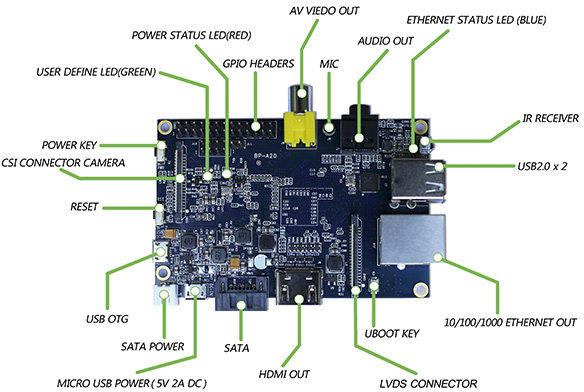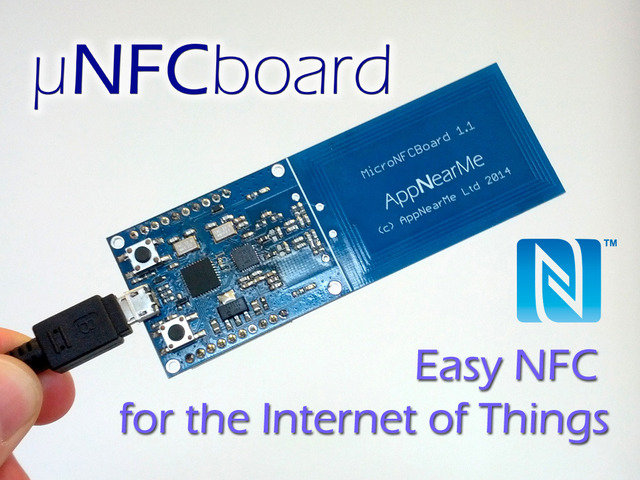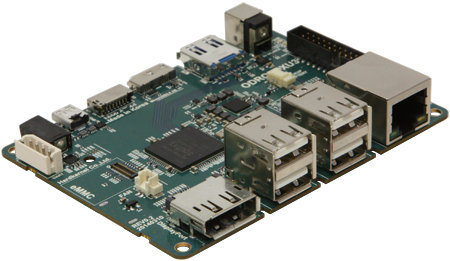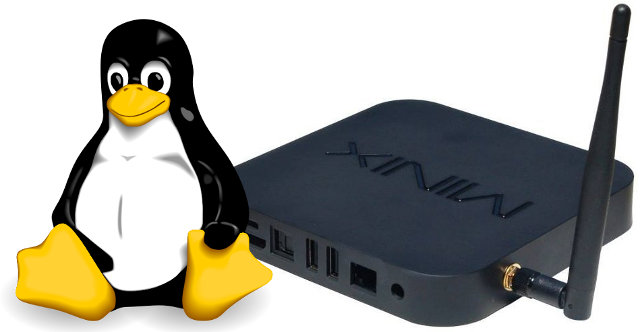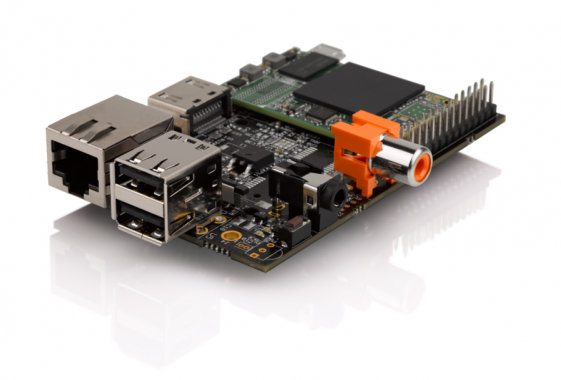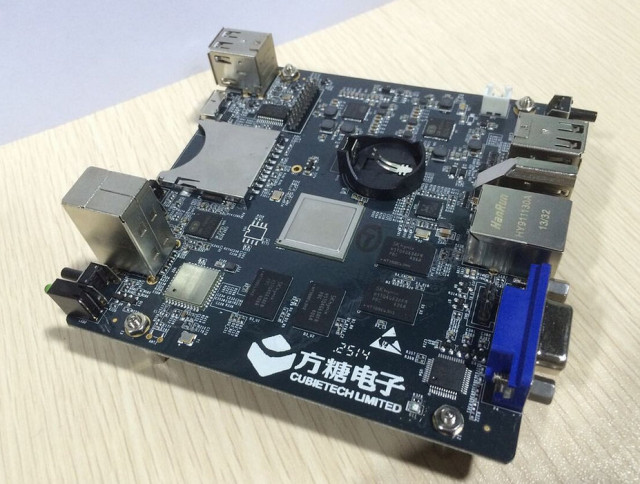Banana Pi is a development board powered by AllWinner A20 dual core SoC with 1GB RAM, and with expansion headers and a form factor very similar to the Raspberry Pi. It can run Debian, Lubuntu, Android 4.2, Arch Linux ARM, Scratch OS, and OpenSuse, but Lemarker.org community would like more educational materials such as open source software or hardware projects, tutorials, etc.., so they’ve launched a program to give away boards to developers and people who can help writing and maintaining documentation. There are three categories of projects: STEAM – “Science, Technology, Engineering, Art & Mathematics” educational, open source projects running on the the Banana Pi Hardware or Software Project – Open source projects based on Banana Pi which could be helpful to the community, including open source hardware peripherals projects; Banana Pi Fans – You don’t need to be as technical as for the two others categories, but you […]
Firefly-RK3288 Development Board To Support Android and Lubuntu
We’ve already got a long list of upcoming Rockchip RK3288 based Android media players, but no low cost development boards have been announced to date. We can certainly expect a Radxa Rock 2 board with the Cortex A17 processor, but it might not be the only one, as Firefly-RK3288 development board powered by Rockchip RK3288 is currently being developed by another Chinese team. Current specifications for Firefly-RK3288 board: SoC – Rockchip 3288 quad core ARM Cortex A17 up to 1.8 GHz with Mali-T764 GPU supporting OpenGL ES 1.1/2.0 /3.0, and OpenCL 1.1 System Memory – 2G DDR3 Storage – 8GB eMMC flash + micro SD slot Video I/O HDMI 2.0 up to 3840×2160@60p VGA out (D-SUB connector) VGA in is available via the expansion headers. LCD, MIPI and LVDS Audio Output / Input – HDMI, optical S/PDIF, microphone header, and built-in MIC Connectivity – Gigabit Ethernet, dual band 802.11 b/g/n Wi-Fi with external antenna, and Bluetooth […]
$70 MicroNFCBoard Brings NFC Connectivity to Any Board or Device (Crowdfunding)
AppNearMe MicroNFCBoard is a development platform for Near Field Communication (NFC) comprised of an NFC transceiver, an NXP MCU, and all software stack and tools you need for development. This board also exposes various I/Os that allows you to connect to external hardware or devices, and it can be used with an Arduino, Raspberry Pi, mbed or PC/Mac. Let’s go through the board specifications first: MCU – NXP LPC11U34FHN33/421 Cortex M0 MCU @ 48MHz, with 10KB RAM, 48KB FLASH, 4KB EEPROM NFC Transceiver – NXP PN512. Reader/Writer and card operation modes supporting ISO14443A/Mifare and FeliCa schemes. NFCIP-1 mode Splittable antenna USB – 1x micro USB port for power and programming I/O – 20x through holes with access to serial (UART), I2C, SPI, 4x ADC inputs, IRQ, Boot and Reset, and power pins. (2x pin header that you can solder are provided) Misc – Reset and bootloader enable push-buttons, 2x LEDs. […]
Hardkernel Unveils $179 ODROID-XU3 Development Board Powered by Samsung Exynos 5422 SoC
Remember ODROID-XU2 development board based on Exynos 5420? The bad news is that it apparently got scrapped, but the good news is that it gave birth to ODROID-XU3 development board powered by the latest Samsung Exynos 5422 octa core big.LITTLE SoC with support for Ubuntu 14.04 and Android 4.4, including GPU 3D acceleration with the company promising a full desktop experience in Ubuntu. ODROID-XU3 specifications: SoC – Samsung Exynos 5422 quad core ARM Cortex-A15 @ 2.0GHz+ quad core ARM Cortex-A7 @ 1.4GHz with Mali-T628 MP6 GPU supporting OpenGL ES 3.0 / 2.0 / 1.1 and OpenCL 1.1 Full profile System Memory – 2GB LPDDR3 RAM PoP (933Mhz, 14.9GB/s memory bandwidth, 2x32bit bus) Storage – Micro SD slot (up to 64GB) + eMMC 5.0 module socket (16, 32, or 64GB module available) Video Output – micro HDMI (Up to 1080p) and DisplayPort (up to 2160p) Audio Output – micro HDMI and […]
Easy and Safe Way to Try Linux on Popular Rockchip RK3188 mini PCs
Until recently, installing Linux on Rockchip R3188 based TV boxes or HDMI TV dongles meant you had to flash one or more binaries to your device using various type of tools for Linux or Windows. But thanks to various members of the community, it’s now as easy as flashing an image for the Raspberry Pi, as long as you own Minix Neo X7, PQ Labs iStick A350-SSD, Radxa Rock development board, or Rikomagic MK802IV (AP6210 or 8188EU Wi-Fi module versions) thanks to images provided by Ian Morrison on G+ mini PC community that can be booted from a (micro) SD card, which the added advantage that it won’t mess with your Android installation. You can do it whether you use a Windows or Linux PC, and it should also be possible on Mac OS X, but I don’t know the commands. Here are the steps to follow for MINIX NEO […]
SolidRun HummingBoard Raspberry Pi-Like Board is Now Available for $45 and Up
HummingBoard is a board made by SolidRun that’s mechanically compatible with the Raspberry Pi, and offering the same expansions connectors, and a few extras. The board is comprised of a baseboard and a microSoM powered by Freescale i.MX6 Solo, Dual Lite or Dual. At first it looked like an internal project, but the board went viral together with the Banana Pi, and the company has now announced availability for the HummingBoard with pricing starting at $45 for the single core version up to $100 for the dual core version with extra options. There are currently three models: HummingBoard-i1 ($44.90) – Freescale i.MX6 Solo with GC880 GPU, 512 MB RAM, 10/100M Ethernet HummingBoard-i2 ($74.99) – Freescale i.MX6 Dual Lite with GC880 GPU, 1GB RAM, 10/100M Ethernet HummingBoard-i2ex ($99.99) – Freescale i.MX6 Dual with GC2000 GPU, 1GB RAM, Gigabit Ethernet, LVDS output, mSATA II interface, PCI Express Gen 2 slot, RTC with […]
Linaro 14.06 Release with Linux Kernel 3.15 and Android 4.4.3
Linaro 14.06 has been released last week with Linux Kernel 3.15 (baseline), Linux Kernel 3.10.44 (LSK), and Android has been updated to 4.4.3. One interesting development this month is that Android for ARMv8 (64-bit ARM) is booting on the fast models using ARM Trusted firmware and U-Boot. SELinux has been enabled in Android. I could not see much new member hardware, except possibly B2120 (HDK) reference board for STMicro STiH407 “Monaco” STB SoC. Here are the highlights of this release: Linux Linaro 3.15-2014.06 GATOR version 5.18 (same version as in 2014.04) updated basic Capri board support from Broadcom LT cortex-strings-arm64 topic (same as in 2014.02) updated Versatile Express ARM64 support (FVP Base and Foundation models, Juno) from ARM LT. updated Versatile Express patches from ARM LT more HiP0x Cortex A15 family updates from HiSilicon LT (hip04_eth, hip04_defconfig) updated LLVM topic Big endian support (same as in 2014.05) ftrace_audit topic from […]
Pictures and Specs for CubieBoard 8 Development Board Powered by AllWinner A80 SoC
Back in April, AllWinner announced partnerships with Linksprite and CubieTech for respectively PcDuino 8 and Cubieboard 8 development boards to feature AllWinner A80 octa core ARM Cortex 15/A7 big.little SoC. However, at the time all we got was some photo-shopped pictures of older versions of the boards with an A80 processor pasted by graphics designers. Some pictures of Cubieboard 8 have now surfaced, and they are clear enough so that we can start to get most of the specs. Here are Cubieboard 8 specifications derived from the pictures (incomplete because we don’t have pictures of the back of the board): SoC – AllWinner A80 octa core big.LITTLE processor with 4 ARM Cortex A15 cores, 4 Cortex A7 cores, and Imagination PowerVR G6200 GPU System Memory – 2GB DDR3 (4x SKhynix H5TQ4G83AFR – 4Gbit RAM chips) – TBC in case they’ve added more RAM chips at the back, unlikely IMHO. Storage […]


